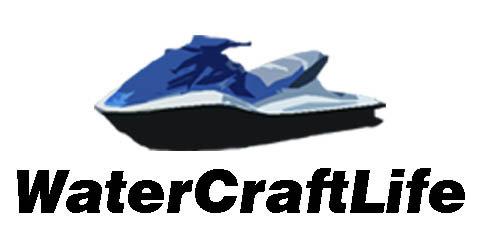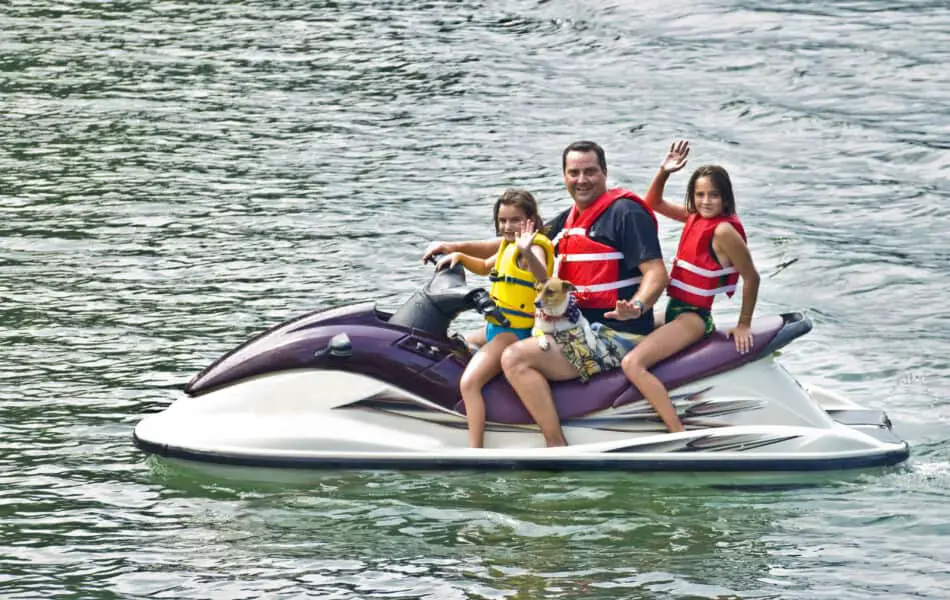Barefoot waterskiing or “barefooting” is an advanced technique used by skiers who have successfully progressed from traditional waterskiing. Barefooting is not only more challenging for the skier, but it is also more challenging for the driver. Typically, barefoot waterskiing is attempted behind a ski boat or another type of boat with an inboard or outboard motor. However, you may be wondering if it is possible to barefoot waterski behind a jet ski.
Can you barefoot ski behind a jet ski?
Many newer more powerful jet skis on the market can pull barefoot water skiers. It is recommended you have at least 160 hp if you want to start using the drop a ski method or do a deep water start. Barefooting behind a jet ski can be better than a boat in some situations, but worse in others.
Barefooting behind a jet ski can be lots of fun, however, this advanced water skiing technique does require extensive practice on the part of the driver and the skier. Also, any water sport carried out behind a jet ski are subjected to various requirements and regulations. All of this and additional information related to how you can barefoot ski behind a jet ski is discussed, explored, and answered below.
Regulations and Safety Tips for Water Skiing Behind a Jet Ski
At first, skiing behind your jet ski may seem impossible, but it is actually very possible and even the preferred method of towing for a variety of water skiers. However, before you grab your skies, start up your jet ski, and hit the lake, you should be familiar with the various regulations set upon water sports happening behind a jet ski.
In general, most states require jet skies towing a water skier, wakeboard, or water tube to be outfitted with three seats. The second of these three seats are required to be occupied by a spotter who is seated facing the tube, water skier, or wakeboarder. The spotter’s job, just like when on a proper boat, is to notify the driver if the skier has fallen or if there’s a problem the driver is not aware of. Jet ski’s pulling a water skier or wakeboarder are required to have a third seat in order to safely transport the skier or wakeboarder.
Using a 100 foot or longer ski rope is another safety tip you should follow when skiing behind a jet ski. This longer rope will place the skier further away from the jet ski and prevent the skier from being anywhere near the jet ski in the event of a fall (which will happen a lot when first trying to barefoot ski). In order to pull a 150 – 200 pound skier, your jet ski should also at least be 160 horsepower or greater. This amount of horsepower will allow the driver to manage the jet ski at the appropriate speed for your given activity.
A turbo jet ski may not be the easiest as it takes some time to spool up. A supercharged jet ski will instantly have torque to pull up your barefoot rider.
Speeds for Towing Barefoot Water Skiers
The process for barefooting behind a jet ski is slightly different from traditional water skiing. The main difference behind the two is that when attempting to barefoot ski, you will need to reach higher speeds upwards of 30 to 40 MPH. At these speeds, you will be successfully able to use your bare feet to skim and travel across the water.
The table displayed below explores the various speeds one should operate at for a variety of water sports including barefooting, wakeboarding, and tubing.
| WHAT ARE YOU TOWING? | SPEED YOU SHOULD MAINTAIN |
| Young Kids on a Tube | 8 – 15 MPH |
| Teenagers or Adults on a Tube | 10 – 20 MPH |
| Water Skiers | 20 – 25 MPH |
| Barefoot Water Skiers | 30 – 40 MPH |
| Wakeboarders | 15 – 25 MPH |
How To Barefoot Ski Behind a Jet Ski
In general, there are two ways to begin to learn how to barefoot ski. These two methods are the deep water start and the step off. The deep water start will require you to have a padded wetsuit, whereas the step off will require you to be comfortable slalom skiing and stepping off of your ski with your back foot. These two methods are explained further below.
How To Deep Water Start Barefoot Ski on a Jet Ski
| Step One | The easiest way to begin to barefoot ski behind a jet ski is to attempt a deep water start. Position yourself in deep water. |
| Step Two | In a deep water start, you should be laying flat on the water’s surface with your feet wrapped on top of the tow rope. At this point, the jet ski should begin to idle forward as you move your head back horizontally to remain flat. |
| Step Three | As your driver starts to accelerate your body should begin to plane out. At this point, you should edge left or right to exit the jet ski’s wake. |
| Step Four | Once outside of the wake, you can ride on your butt until you are comfortable with attempting to place weight on your feet. When you are comfortable, you should begin by taking your feet off of the rope and slowly positioning them as close to your body as possible. Your heels should be close to your butt. |
| Step Five | Once in position, you should begin to apply pressure upon the water. Lean back and keep your chest out during this step to avoid catching an edge. |
| Step Six | If the previous step was successful you should be up on your feet! |
How to Barefoot Water Ski Using the Step off Method on a Jet Ski
| Step One | Attempting a step off should begin with a deep water slalom start. |
| Step Two | Once you are up and comfortable, you should edge outside of the wake. Left foot dominant skiers should edge left and right foot dominant skiers should edge right. At this point, you should give your spotter a signal to approach your barefooting speed. |
| Step Three | Once the jet ski is up to speed, you should take your back foot out of the ski’s binding and test the water. You should be able to feel the water supporting your feet. If it doesn’t seem like it will support you, you should ask your driver to accelerate. |
| Step Four | As you become comfortable, you will need to simultaneously remove your foot from your ski and transition to the water. Your back should be leaning back and your chest should be out. |
| Step Five | As your foot reaches the water, you can lean into the riding position. |
| Step Six | If the previous step was successful you should be up on your feet. |
3 Tips for Driving a Jet Ski while Barefoot Skiing
- Maintain Consistent Speed
Always anticipate when the water skier will be carving and putting more weight onto the rope. This will cause the jet ski to slow down making it harder for them to stay up. As the driver, your job is to anticipate this and adjust throttle accordingly.
2. Avoid Turning
If you can, as a driver avoid turning. This will slow the barefoot skier down causing him to sink. If you do have to turn, make sure you add to your speed so he can stay up.
3. Avoid the Rope
Always have your spotter controlling the rope and keep it out of your jet ski pump. This will ruin your day on the water if you do suck it up. Never reverse while a rope is attached so you don’t suck it up.
Troubleshooting and Moving Forward
If you are having problems getting the hang of barefooting behind a jet ski, you shouldn’t worry. The method is tough in its own right and even tougher behind a jet ski. As you and your driver continue to practice the method it should get easier. Once you do get the hang of it, remember to be safe on the water, and enjoy your time practicing the sport!

